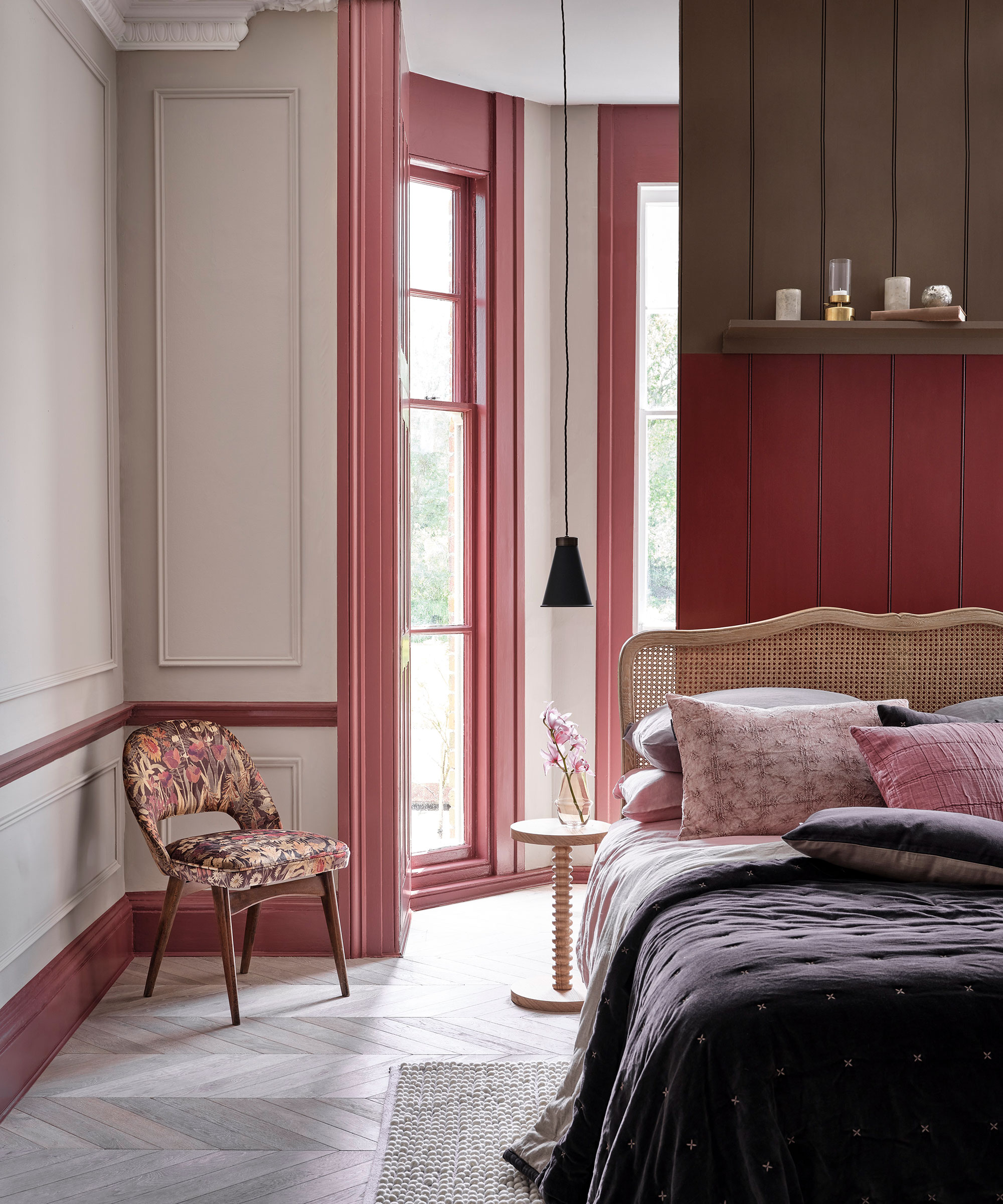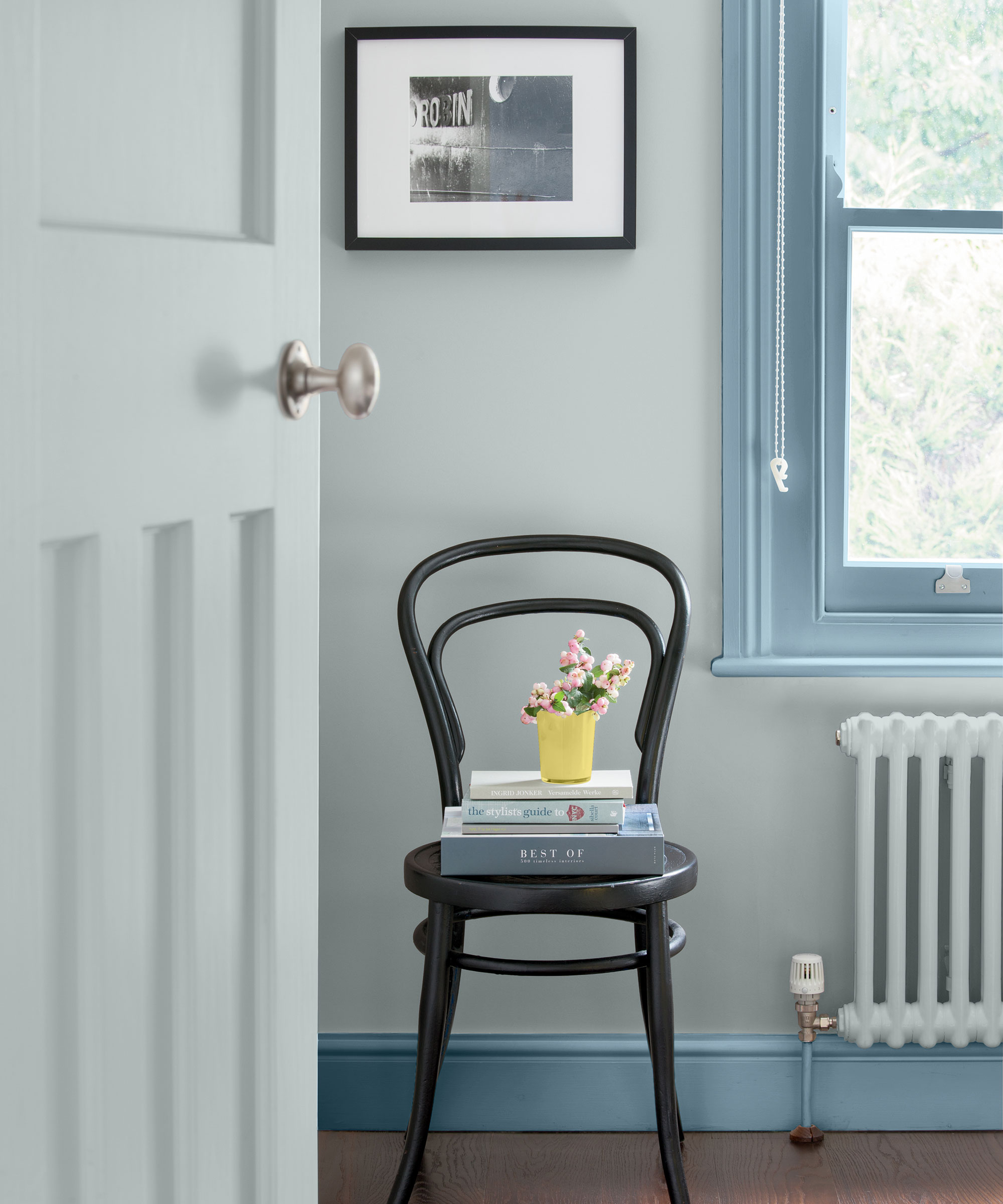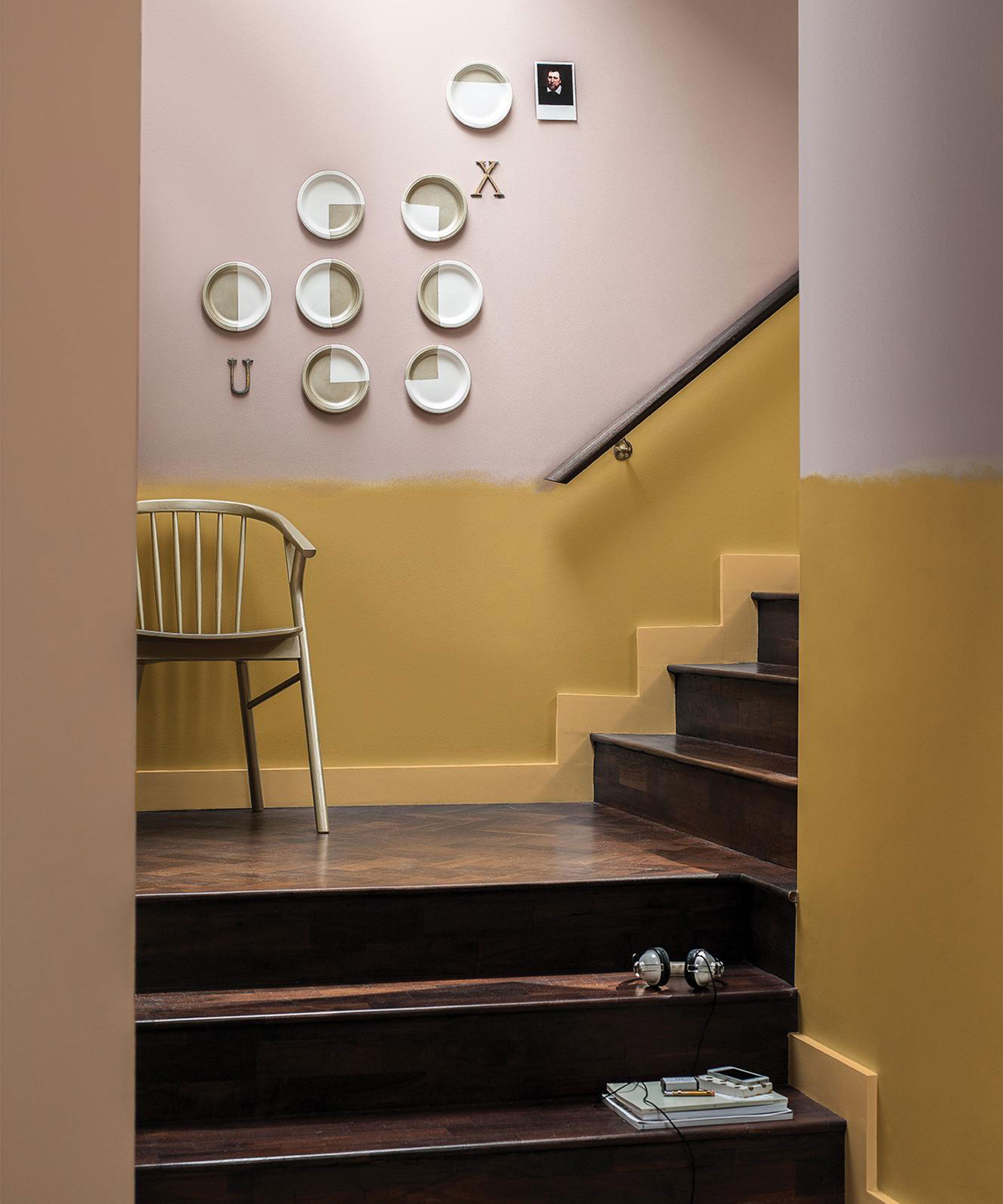How to paint skirting boards- a step-by-step guide
Follow our top tips to ensure smart, painted skirting boards every time

Freshly painted skirting boards can make a big impact in any room, but if you're not sure how to paint skirting boards, then you've come to the right place.
While it's fairly traditional to paint skirting boards a fresh, bright white, the new norm is to banish boring white and opt for something different, by painting your skirting boards either the same as your wall for immersive colour, or a different shade entirely!
And with plenty of paint ideas to inspire your next decorating project, knowing how to complete your look and frame your room perfectly, will be worth its weight in gold.
Because of their positioning in a room, skirting boards are often the first element of a room to look a little tired. Constant scuffs, kicks and the gathering of dirt and dust, can mean they can get battered from every day wear and tear, while your walls and ceiling still look pristine. But that just means they are doing their job- protecting your walls from taking a hammering, as well as neatly finishing off your space. And the good thing is, that an afternoons work can soon turn things around...
How to paint skirting boards

Buy now: Highland Peat Interior Eggshell, £64 for 2.5ltr, Fenwick & Tilebrook
As with any DIY project, it's all in the preparation to ensure the best job, so while it can seem time consuming and boring, we fully recommend you follow each of our below steps for the best outcome.
What finish paint to choose it totally up to you. A gloss paint is the most durable, but can look dated in some spaces (or fantastic in others!).
If you're not a fan of the high-shine finish, a satin finish might suit you better as it still has good durability, but a less subtle shine to it. An eggshell paint will give a wonderfully soft, matt appearance to match your walls, but it will show scuffs and marks easily, so perhaps not the best option if you have small children or large pegs.
What you'll need
- Newspaper, dust sheets or plastic sheeting to protect your floors
- A damp cloth
- A medium coarse sand paper
- Decorators tape (or masking tape)
- A good quality paint brush
- Your chosen paint colour and a pot to decant in to
1. Protect your floors
Using masking tape, stick down the edge of your newspaper or sheeting, as close to the skirting boards as possible so there is no gap between the floor and the board. This way any drips or slips of the paint brush won't damage your flooring. If this happens, be sure to clear it up as quickly as possible, as you don't want to step in it and trudge footprints through your house!
2. Prep your skirting boards
Yup, even your skirting boards way down at the bottom of your wall need to be prepared before you get all gung-ho about things. The level of prep they will need depends on their state. For old, previously painted boards, make sure any holes or dents are filed, dust and dirt is removed and you give them a good wipe down with a damp cloth. Then give them a light sand with a medium coarse sand paper. Alternatively, you could use an electric sander. This is especially important for boards previously painted in a gloss paint.
Following this, give them another quick wipe to remove the dust.
For new, bare skirting boards that should be dent-free and smooth to start with, give these a quick sanding too, so provide a suitable key for the paint to stick to.

Buy now: Wall and door in Chapel Choir V700 premium blend, £31 for 2.5ltr; Skirting and window frame in Gossamer Threads V700 premium blend, £31 for 2.5ltr, both Valspar at B&Q.
3. Stick tape to the walls
Next apply decorators tape along the base of the wall, where it meets the top of the skirting board. This will ensure a crisp, clean line and protect your walls from getting marked with the paint.
TOP TIP: We'd still recommend this step, even if you are painting your skirting boards the same colour as your walls, as you might want to use a paint with a more durable finish, than the paint you have used on your wall.
4. Apply your paint
Depending on your chosen paint, you might need to use a primer first. We'd always recommend this step if your boards are bare, as it gives a much better finish, but some paints do have primer built in, so you might be able to get away with this step. If not, apply your primer with a good quality brush, leave to dry, give a light sand and then wipe, followed by a second coat. Then, before starting with the first layer of your chosen paint, give it a light sand and wipe again.
If your paint is water-based, opt for a synthetic bristled brush, as natural bristles can sometimes soak up too much for the paint and will leave a streaky look.
Apply at least 2 coats of your chosen colour, sanding and cleaning in between each coat, then once completely dry, carefully remove the tape from the wall.

Buy now: Easycare Washable and Tough matt Cherished Gold emulsion, £38.08 for 2.5ltr, Dulux
What's the easiest way to paint skirting boards?
The easiest way to paint skirting boards is with a good quality paint, that has a primer already mixed in. This will save you from having to paint a primer layer before you start with your chosen paint colour. Use a wide brush so that you don't have to keep going over the same bits with a smaller brush and apply the paint in long, steady strokes. Try not to go over the same area too many times or it will start to get sticky. Allow the recommended time to dry between each coat and make sure to clean and dry your brush in this time too.
Do you paint walls or skirting boards first?
We'd recommend painting walls first, and skirting boards second. As a general rule of thumb when decorating, start from the top and work your way down. For example, when painting a room, start with the ceiling, next the walls, then lastly the woodwork, including skirting boards, window frames and door frames. That way, you won't risk getting any drip marks on parts of the wall further down.
Can you paint straight over skirting boards?
You can paint straight over skirting boards without prepping or sanding them, but you'll always get a better finish if you put the effort in. Without properly sanding and preparing wood before painting it, means it can easily chip or peel away as there is no key for it to adhere to. While it's a quick and easy fix, in the long run, you are better off spending the time prepping your boards before painting them.
In terms of whether you can paint straight over skirting boards to continue the same colour on the wall, then yes, you can absolutely do this! It's a good trick to make a space seem larger and will immerse you in colour.
Get the Ideal Home Newsletter
Sign up to our newsletter for style and decor inspiration, house makeovers, project advice and more.

Holly Walsh is a freelance Interiors Writer and Shopping Editor, but worked in-house here at Ideal Home for nearly 10 years. With a background of studies in Interior Design, her career in interior journalism was a no-brainer and her passion for decorating homes is still as strong now 15 years after she started, as it ever was. While Holly has written for most of the home titles at Future, including Livingetc, Country Homes & Interiors, Homes and Gardens, Woman & Home and Style at Home, Ideal Home has always been her ideal home, and she can still be found sharing her expertise and advice across both the printed magazine and the website, while also raising her two young children.
-
 Will a conservatory add value to your home and how can you maximise it?
Will a conservatory add value to your home and how can you maximise it?This is what the pros say
By Amy Reeves
-
 I’ve been looking for a new signature scent for my home and The White Company's new fragrance is the exact summer holiday smell I needed
I’ve been looking for a new signature scent for my home and The White Company's new fragrance is the exact summer holiday smell I neededSantorini smells fresh, summery and sophisticated
By Kezia Reynolds
-
 How to remove algae from garden walls in five steps – and the cleaning product experts rave about for tackling it fast
How to remove algae from garden walls in five steps – and the cleaning product experts rave about for tackling it fastExperts share their top tips for getting garden walls algae-free
By Katie Sims